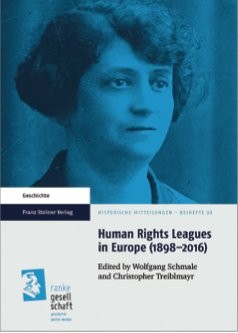A history – even a brief one - of the original Luxembourgish League for Human Rights has not been written until now, and it seems a difficult task to undertake. The difficulty here is twofold: Firstly, the current Ligue des Droits de l’Homme – Action Luxembourg Ouvert et Solidaire (LDH-ALOS) was only created in 2008 and has no direct ties to the original Luxembourgish League, which has probably ceased all activity in the 1980s. Secondly, a complete archive of the old League is nowhere to be found, although a recent development shows that private collections are being opened to historians.
An article in the Luxembourgish newspaper “Der arme Teufel” mentions the League for the first time and explains that it has been founded in the 1920s. But a founding document has not been found yet. The same goes for an official proof of dissolution. French historian Emmanuel Naquet indicates the year 1923 as a starting point and places the Leagues amongst the oldest European Leagues. So far, this seems to be accurate.
La Ligue des Droits de l’Homme est restée au fond toujours une société quelque peu secrète et connue seulement aux initiés. – Julien Mersch
Until now, the research relied mainly on the Bulletins of the League. These were collected by the Archives Nationales de Luxembourg and the Bibliothèque nationale de Luxembourg, although a series of numbers is missing or has never been published. From those sources we can develop the main points that were of interest for the League as well as their main partners. Just to give you a brief overview: the League was involved in the discussions around the “gagging law” struggle in the 1930s as well as during the following referendum. But the members didn’t only restrict their actions to Luxembourgish soil, but were quite active when it came to communicating with various leagues in other countries. They also took a lead role during the establishment and development of the international federation.
Although the League was involved in a variety of issues, most of these leads haven’t been studied yet, and the efforts and amount of work it contributed to these cases is hitherto unknown. A number of research questions can therefore be derived from this chapter.



